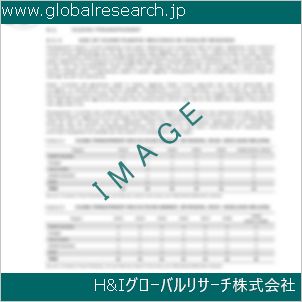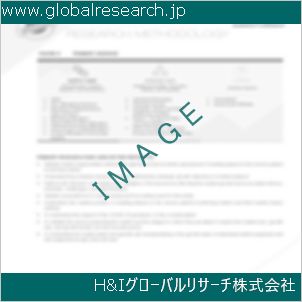Table of Contents
1 Industry Overview of Polyvinylchloride
1.1 Definition and Specifications of Polyvinylchloride
1.1.1 Definition of Polyvinylchloride
1.1.2 Specifications of Polyvinylchloride
1.2 Classification of Polyvinylchloride
1.3 Applications of Polyvinylchloride
1.3.1 Nuclear Application
1.3.2 Non-Nuclear Application
1.4 Industry Chain Structure of Polyvinylchloride
1.5 Industry Overview and Major Regions Status of Polyvinylchloride
1.5.1 Industry Overview of Polyvinylchloride
1.5.2 Global Major Regions Status of Polyvinylchloride
1.6 Industry Policy Analysis of Polyvinylchloride
1.7 Industry News Analysis of Polyvinylchloride
2 Manufacturing Cost Structure Analysis of Polyvinylchloride
2.1 Raw Material Suppliers and Price Analysis of Polyvinylchloride
2.2 Equipment Suppliers and Price Analysis of Polyvinylchloride
2.3 Labor Cost Analysis of Polyvinylchloride
2.4 Other Costs Analysis of Polyvinylchloride
2.5 Manufacturing Cost Structure Analysis of Polyvinylchloride
2.6 Manufacturing Process Analysis of Polyvinylchloride
3 Technical Data and Manufacturing Plants Analysis of Polyvinylchloride
3.1 Capacity and Commercial Production Date of Global Polyvinylchloride Major Manufacturers in 2023
3.2 Manufacturing Plants Distribution of Global Polyvinylchloride Major Manufacturers in 2023
3.3 R&D Status and Technology Source of Global Polyvinylchloride Major Manufacturers in 2023
3.4 Raw Materials Sources Analysis of Global Polyvinylchloride Major Manufacturers in 2023
4 Capacity, Production and Revenue Analysis of Polyvinylchloride by Regions, Types and Manufacturers
4.1 Global Capacity, Production and Revenue of Polyvinylchloride by Regions 2019-2024
4.2 Global and Major Regions Capacity, Production, Revenue and Growth Rate of Polyvinylchloride 2019-2024
4.3 Global Capacity, Production and Revenue of Polyvinylchloride by Types 2019-2024
4.4 Global Capacity, Production and Revenue of Polyvinylchloride by Manufacturers 2019-2024
5 Price, Cost, Gross and Gross Margin Analysis of Polyvinylchloride by Regions, Types and Manufacturers
5.1 Price, Cost, Gross and Gross Margin Analysis of Polyvinylchloride by Regions 2019-2024
5.2 Price, Cost, Gross and Gross Margin Analysis of Polyvinylchloride by Types 2019-2024
5.3 Price, Cost, Gross and Gross Margin Analysis of Polyvinylchloride by Manufacturers 2019-2024
6 Consumption Volume, Consumption Value and Sale Price Analysis of Polyvinylchloride by Regions, Types and Applications
6.1 Global Consumption Volume and Consumption Value of Polyvinylchloride by Regions 2019-2024
6.2 Global and Major Regions Consumption Volume, Consumption Value and Growth Rate of Polyvinylchloride 2019-2024
6.3 Global Consumption Volume and Consumption Value of Polyvinylchloride by Types 2019-2024
6.4 Global Consumption Volume and Consumption Value of Polyvinylchloride by Applications 2019-2024
6.5 Sale Price of Polyvinylchloride by Regions 2019-2024
6.6 Sale Price of Polyvinylchloride by Types 2019-2024
6.7 Sale Price of Polyvinylchloride by Applications 2019-2024
6.8 Market Share Analysis of Polyvinylchloride by Different Sale Price Levels
7 Supply, Import, Export and Consumption Analysis of Polyvinylchloride
7.1 Supply, Consumption and Gap of Polyvinylchloride 2019-2024
7.2 Global Capacity, Production, Price, Cost, Revenue, Supply, Import, Export and Consumption of Polyvinylchloride 2019-2024
7.3 USA Capacity, Production, Price, Cost, Revenue, Supply, Import, Export and Consumption of Polyvinylchloride 2019-2024
7.4 EU Capacity, Production, Price, Cost, Revenue, Supply, Import, Export and Consumption of Polyvinylchloride 2019-2024
7.5 China Capacity, Production, Price, Cost, Revenue, Supply, Import, Export and Consumption of Polyvinylchloride 2019-2024
7.6 Japan Capacity, Production, Price, Cost, Revenue, Supply, Import, Export and Consumption of Polyvinylchloride 2019-2024
8 Major Manufacturers Analysis of Polyvinylchloride
8.1 Manufacturer One
8.1.1 Company Profile
8.1.2 Product Picture and Specifications
8.1.2.1 Type I
8.1.2.2 Type II
8.1.2.3 Type III
8.1.3 Capacity, Production, Price, Cost, Gross and Revenue
8.1.4 Contact Information
8.2 Manufacturer Two
8.2.1 Company Profile
8.2.2 Product Picture and Specifications
8.2.2.1 Type I
8.2.2.2 Type II
8.2.2.3 Type III
8.2.3 Capacity, Production, Price, Cost, Gross and Revenue
8.2.4 Contact Information
8.3 Manufacturer Three
8.3.1 Company Profile
8.3.2 Product Picture and Specifications
8.3.2.1 Type I
8.3.2.2 Type II
8.3.2.3 Type III
8.3.3 Capacity, Production, Price, Cost, Gross and Revenue
8.3.4 Contact Information
8.4 Manufacturer Four
8.4.1 Company Profile
8.4.2 Product Picture and Specifications
8.4.2.1 Type I
8.4.2.2 Type II
8.4.2.3 Type III
8.4.3 Capacity, Production, Price, Cost, Gross and Revenue
8.4.4 Contact Information
8.5 Manufacturer Five
8.5.1 Company Profile
8.5.2 Product Picture and Specifications
8.5.2.1 Type I
8.5.2.2 Type II
8.5.2.3 Type III
8.5.3 Capacity, Production, Price, Cost, Gross and Revenue
8.5.4 Contact Information
…
9 Marketing Trader or Distributor Analysis of Polyvinylchloride
9.1 Marketing Channels Status of Polyvinylchloride
9.2 Traders or Distributors with Contact Information of Polyvinylchloride by Regions
9.3 Ex-work Price, Channel Price and End Buyer Price Analysis of Polyvinylchloride
9.4 Regional Import, Export and Trade Analysis of Polyvinylchloride
10 Industry Chain Analysis of Polyvinylchloride
10.1 Upstream Major Raw Materials Suppliers Analysis of Polyvinylchloride
10.1.1 Major Raw Materials Suppliers with Contact Information Analysis of Polyvinylchloride
10.1.2 Major Raw Materials Suppliers with Supply Volume Analysis of Polyvinylchloride by Regions
10.2 Upstream Major Equipment Suppliers Analysis of Polyvinylchloride
10.2.1 Major Equipment Suppliers with Contact Information Analysis of Polyvinylchloride
10.2.2 Major Equipment Suppliers with Product Pictures Analysis of Polyvinylchloride by Regions
10.3 Downstream Major Consumers Analysis of Polyvinylchloride
10.3.1 Major Consumers with Contact Information Analysis of Polyvinylchloride
10.3.2 Major Consumers with Consumption Volume Analysis of Polyvinylchloride by Regions
10.4 Supply Chain Relationship Analysis of Polyvinylchloride
11 Development Trend of Analysis of Polyvinylchloride
11.1 Capacity, Production and Revenue Forecast of Polyvinylchloride by Regions and Types
11.1.1 Global Capacity, Production and Revenue of Polyvinylchloride by Regions 2024-2029
11.1.2 Global and Major Regions Capacity, Production, Revenue and Growth Rate of Polyvinylchloride 2024-2029
11.1.3 Global Capacity, Production and Revenue of Polyvinylchloride by Types 2024-2029
11.2 Consumption Volume and Consumption Value Forecast of Polyvinylchloride by Regions, Types and Applications
11.2.1 Global Consumption Volume and Consumption Value of Polyvinylchloride by Regions 2024-2029
11.2.2 Global and Major Regions Consumption Volume, Consumption Value and Growth Rate of Polyvinylchloride 2024-2029
11.2.3 Global Consumption Volume and Consumption Value of Polyvinylchloride by Types 2024-2029
11.2.4 Global Consumption Volume and Consumption Value of Polyvinylchloride by Applications 2024-2029
11.3 Supply, Import, Export and Consumption Forecast of Polyvinylchloride
11.3.1 Supply, Consumption and Gap of Polyvinylchloride 2024-2029
11.3.2 Global Capacity, Production, Price, Cost, Revenue, Supply, Import, Export and Consumption of Polyvinylchloride 2024-2029
11.3.3 USA Capacity, Production, Price, Cost, Revenue, Supply, Import, Export and Consumption of Polyvinylchloride 2024-2029
11.3.4 EU Capacity, Production, Price, Cost, Revenue, Supply, Import, Export and Consumption of Polyvinylchloride 2024-2029
11.3.5 China Capacity, Production, Price, Cost, Revenue, Supply, Import, Export and Consumption of Polyvinylchloride 2024-2029
11.3.6 Japan Capacity, Production, Price, Cost, Revenue, Supply, Import, Export and Consumption of Polyvinylchloride 2024-2029
12 New Project Investment Feasibility Analysis of Polyvinylchloride
12.1 New Project SWOT Analysis of Polyvinylchloride
12.2 New Project Investment Feasibility Analysis of Polyvinylchloride
13 Conclusion of the Global Polyvinylchloride (CAS 9002-86-2) Industry 2024 Market Research Report
| ※参考情報 塩化ビニル樹脂(Polyvinylchloride、略称PVC)は、最も広く使用されている合成樹脂の一つであり、その特性や用途から多種多様な分野で重宝されています。塩化ビニル樹脂は、塩化ビニルモノマー(Vinyl Chloride Monomer、VCM)を重合することで得られ、基本的な化学式はC2H3Clです。 塩化ビニル樹脂の特徴としては、その耐久性、耐薬品性、耐衝撃性、難燃性、さらにはコストパフォーマンスの良さが挙げられます。また、軽量で加工が容易なため、様々な形状や製品に成形できるのも大きな魅力です。さらに、塩化ビニル樹脂は、添加剤を使用することで性能を向上させることが可能です。たとえば、可塑剤を加えることで柔軟性を持たせたり、安定剤を加えることで紫外線劣化を防ぐことができます。そのため、塩化ビニル樹脂は、柔軟なシート状の製品から硬いパイプやプレートまで幅広い種類を持つことが特徴です。 塩化ビニル樹脂には大きく分けて二つの種類があります。ひとつは硬質塩化ビニル(Rigid PVC)で、主に建材や配管などの硬い材料として使用されます。もうひとつは柔軟塩化ビニル(Flexible PVC)で、これは可塑剤を添加することによって柔らかく加工され、フローリングや電気ケーブルの被覆などの用途で使われます。このように、塩化ビニル樹脂はその性質に応じて適切な形状に成形し、さまざまな実用的な製品に利用されます。 用途に関しては、塩化ビニル樹脂は建設業から医療、電子機器、包装、日用品に至るまで幅広く応用されています。建材分野では、PVCはパイプ、窓枠、サイディングなどに利用されており、その耐水性や耐久性は特に評価されています。また、医療分野では、血液バッグやチューブなど、衛生面と性能が求められる製品にも使用されます。電気ケーブルの絶縁体としても重要な役割を果たしており、その耐熱性や難燃性が求められます。その他にも、柔軟な特性を活かして、衣料品の合皮としてや、スポーツ用品、玩具などにも利用されています。 関連技術としては、塩化ビニル樹脂の加工技術が挙げられます。成形方法には、押出し成形、射出成形、真空成形などがあり、それぞれのプロセスは用途や製品の種類に応じて選ばれます。また、塩化ビニル樹脂はリサイクルが比較的容易であり、使用済み製品を再処理して新たな製品として利用することが期待されています。このリサイクル技術の向上により、環境への配慮も高まっています。 さらに、最近の研究では塩化ビニル樹脂の環境負荷を軽減するための改良が進められています。生分解性材料やバイオベースの材料との複合化によって、持続可能な材料としての特性を持たせる試みも行われています。また、性能を引き出すための新しい添加剤の開発や、製造過程におけるエネルギー効率の改善に関する技術革新も進行中です。 塩化ビニル樹脂はその多様性と利便性から、今後も様々な分野で重要な素材として使用され続けるでしょう。それと同時に、環境への配慮からリサイクル技術や新材料の研究が進むことで、持続可能な産業の発展に寄与することが期待されています。塩化ビニル樹脂そのものの特性を活かしつつ、社会のニーズや環境問題に適応していくことで、今後の展望が楽しみです。 |
❖ 免責事項 ❖
http://www.globalresearch.jp/disclaimer












